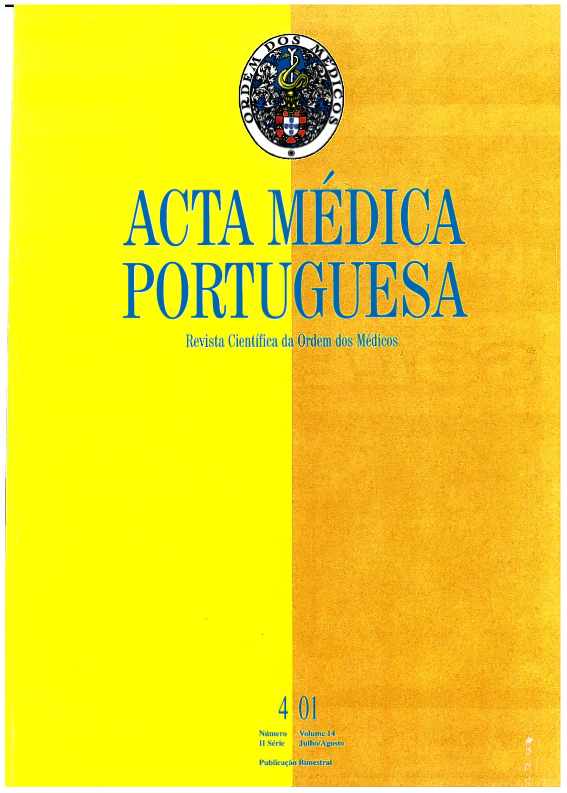Invaginação intestinal na criança. Redução com pneumo-enema.
DOI:
https://doi.org/10.20344/amp.1866Resumo
Pneumatic reduction of intussusception in children is an effective and safe procedure, although controversy persists concerning contraindications. The shown by this procedure when compared to barium reduction have led to its implementation in our Service.To evaluate the usefulness of a 'handicraft method' of pneumatic reduction of intussusception with very restricted contraindications (peritonitis or shock).The prospective study included 50 attempts at pneumatic reduction in 48 children (age range: 1.5-24 months). After confirmation of the diagnosis by ultrasonography. Then, air insufflation of the colon was performed under manometric and fluoroscopic control. After confirmation of diagnosis by ultrasonography, air insufflation of the colon was performed under manometric and fluoroscopic control in an operative room. Evolution longer than 24 hours was considered diagnostic delay, leukocytosis if WBC > 15 x 10(9)/l and distal localisation after splenic angle. Immediate laparotomy was undertaken in case of unsuccessful or doubtful reduction.Thirty-five reduction procedures (70%) were effective ab initio. In the 15 children submitted to laparotomy, seven were completely reduced (14%), five were manually reduced (10%), two presented intestinal necrosis (4%) and one (recurrence) had an ileal duplication (2%). The "real" efficacy (84%) was lower, even though significantly affected by diagnostic delay (81% vs 83%), rectal bleeding (81% vs 100%) or leukocytosis (71% vs 81%); efficacy was significantly lower only in distal localised cases (67% vs 97%, p = 0.02). There was one more recurrence (4%) and no other complications.The adopted method of pneumatic reduction was highly effective with low morbidity. Restricted contraindications were appropriate.Downloads
Downloads
Como Citar
Edição
Secção
Licença
Todos os artigos publicados na AMP são de acesso aberto e cumprem os requisitos das agências de financiamento ou instituições académicas. Relativamente à utilização por terceiros a AMP rege-se pelos termos da licença Creative Commons ‘Atribuição – Uso Não-Comercial – (CC-BY-NC)’.
É da responsabilidade do autor obter permissão para reproduzir figuras, tabelas, etc., de outras publicações. Após a aceitação de um artigo, os autores serão convidados a preencher uma “Declaração de Responsabilidade Autoral e Partilha de Direitos de Autor “(http://www.actamedicaportuguesa.com/info/AMP-NormasPublicacao.pdf) e a “Declaração de Potenciais Conflitos de Interesse” (http://www.icmje.org/conflicts-of-interest) do ICMJE. Será enviado um e-mail ao autor correspondente, confirmando a receção do manuscrito.
Após a publicação, os autores ficam autorizados a disponibilizar os seus artigos em repositórios das suas instituições de origem, desde que mencionem sempre onde foram publicados e de acordo com a licença Creative Commons









